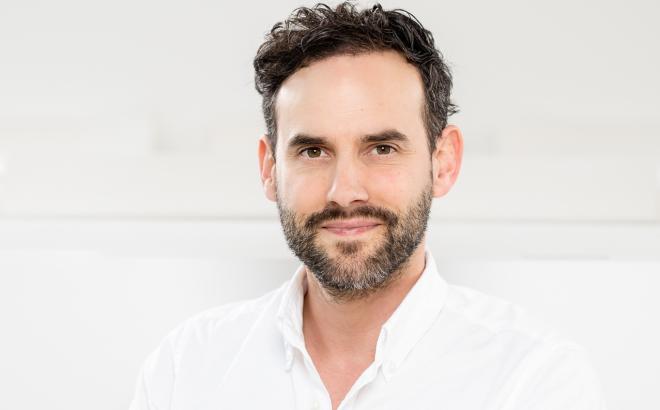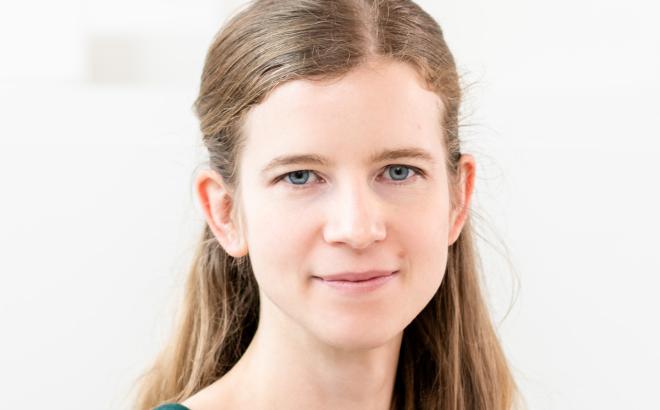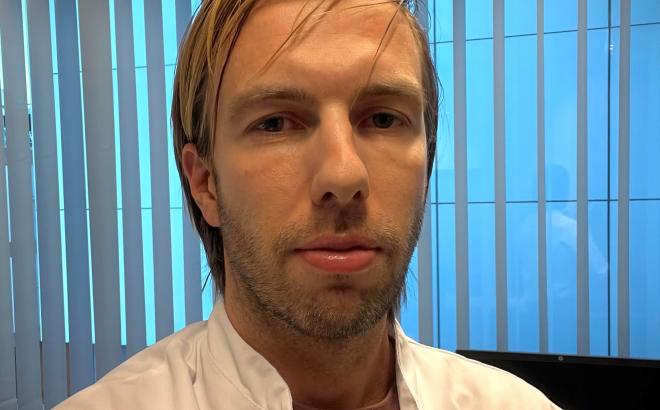Dieter Pahr, Biomechanist
Research — it’s (not) back-breaking work
Dieter Pahr is Professor of Musculoskeletal Biomechanics at Karl Landsteiner University of Health Sciences, where he heads the Division of Biomechanics and is responsible for training and teaching in biomedical physics. As a researcher, he specialises in simulation methods, imaging techniques, experimental studies, and 3D printing.
From the start of his university career, Dieter Pahr has always believed in the importance of looking beneath the surface and asking hard questions. This is why he was driven to enter the field of research after completing his mechanical engineering degree in Vienna: “I didn’t just want to learn and understand, I wanted to apply, interpret, and replicate. I had a keen interest in digitalisation and virtual research, which is why I ended up in aircraft construction and simulation.” In his post-doctoral work, he began to apply methods from aircraft construction to the biomechanics of human bones in order to investigate how this living material behaves under mechanical stress.
Applied research for the clinics
In 2016, while serving as Dean of Studies for Medical Technology at TU Wien, he was appointed Professor of Biomechanics at Karl Landsteiner University, where he was able to use his expertise in simulation and biomechanics to harness the synergies between the two universities through a dual professorship: “I have always been fascinated by clinical research and am committed to motivating clinicians to conduct more applied research and take advantage of the benefits of digitalisation and 3D printing. Krems offered ideal conditions for this.” Today, his research covers prevention, treatment, and aftercare of musculoskeletal disorders with the aid of simulation methods, imaging techniques, experimental investigations, and 3D printing.
Musculoskeletal biomechanics
In 2016, a research focus on biomechanics was established at Karl Landsteiner University. This is a win-win situation for everyone, according to Dr Pahr, because it is closely linked to the Division of Physiology and the Clinical Division of Orthopaedics and Traumatology. “We want to incorporate more research and method development into everyday clinical practice. For example, we are looking at many aspects of the musculoskeletal system with the aid of motion sensors, and asking which therapy methods work more efficiently on patients after cruciate ligament surgery.” In orthopaedics, he is researching the development of new implant techniques and treatments for complicated bone fractures. “We use biomechanical methods to analyse bone strength in order to securely attach implants, for example, or to identify how many bone screws are required for anchoring.” Mobility depends on bones being strong enough to cope with physical demands. Osteoporosis, a bone metabolism disorder, weakens bones and can make physical mobility increasingly difficult. “Osteoporosis research is another important focus and involves much more than just measuring bone density. Our research uses 3D printing and modern digital methods. For example, we can insert implant systems into artificial bone and soft tissue and then analyse how the tissue behaves in the surrounding area. It gives us a good opportunity to see how biological materials relate to tendons and muscles. These developments also offer important surgical training models”, he explains.
Dieter Pahr describes himself as a generalist and universal scientist, and values diversity and enjoyment in his work just as much as openness and curiosity. “I hope to contribute to future developments that are of lasting benefit to both patients and the healthcare system. Digitalisation and simulation are two areas that should be given much more space and attention.”





